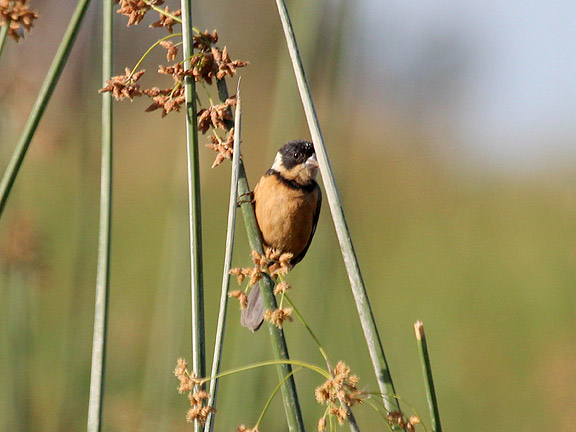
The Clements Checklist includes only species and subspecies, along with subspecies groups which are further identified as monotypic (consisting of one subspecies) or polytypic (consisting of more than one subspecies). The list of species available in eBird is the eBird Taxonomy (v2018) and includes all species, subspecies groups (which we call identifiable sub-specific forms or ISSF), hybrids, intergrades, spuhs (e.g., scoter sp.), slashes (e.g., Short-billed/Long-billed Dowitcher), domestics, and forms. The eBird/Clements Checklist is an integrated global taxonomy for the birds of the world, including all species and subspecies, as well as additional taxa useful to field birders to report in eBird.
#CINNAMON RUMPED SEEDEATER UPDATE#
This year’s update is v2018 of the eBird/Clements Checklist. For example, this step will make sure that all your post-update submissions have the correct new entries such as Velvet Scoter or White-winged Scoter instead of the pre-update White-winged/Velvet Scoter. This will ensure that the local checklist filter is updated to the newest version. Also, after you’ve updated to the new taxonomy (you should see an “Updating Taxonomy…” notification appear when you start the app up) make sure to submit a list from a new location near you (i.e., not one of your stored “recent locations”). If you use eBird Mobile on iPhone or Android, please check the App Store or Google Play Store to make sure you have the latest version of the app.

If you need to correct anything, it’s super easy using” Change Species.” With the publication of this story, most species should be changed, aside from species that have a “changes still underway” note.
.jpg)
However, please review your lists (made simple by the “my records” links below). We automatically update your records for you when possible, using known range, your checklist comments, and other information to assign records to a species.If you only have time to take two things away from the taxonomy update, here they are: If you see unfamiliar bird names in the list, please refer to the story below to understand the change and why it happened.

We do have a small number of minor changes yet to make, which may affect the lists for some users as we implement these over the next few days. Your eBird Mobile should have had an “Updating taxonomy…” message that will have loaded the new version. This includes your My eBird lists, range maps, bar charts, region and hotspot lists, and data entry. As of this point, all core eBird data will be reflecting the new taxonomy. We do this update once each year, taking into account the past 12 months worth of recent taxonomic knowledge on splits, lumps, name changes, and changes in the sequence of the species lists.


 0 kommentar(er)
0 kommentar(er)
